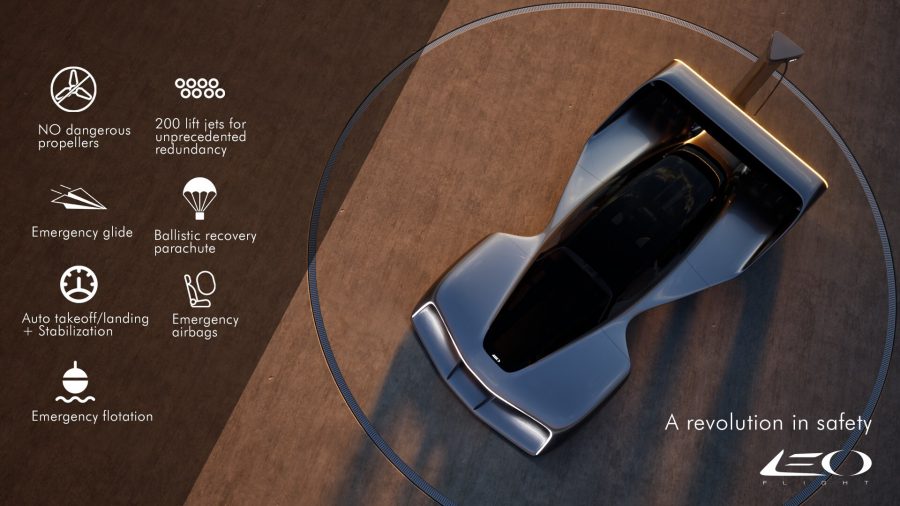The dream of personal flying cars has long hovered just out of reach, a shimmering mirage on the horizon of futuristic mobility. But, with its bold vision and cutting-edge technology, seems determined to turn that dream into a tangible, electrifying reality. At CES 2025, the Indiana Economic Development Corporation (IEDC) shone a spotlight on LEO Flight and its eVTOL marvels—LEO Solo and LEO Coupe—marking a pivotal moment in the race to dominate the sky highways.
Meet the LEO Solo: Ultralight Fun, No License Required
The LEO Solo, a single-seat eVTOL designed for recreational pilots, is perhaps the most accessible entry into personal air mobility to date. Slated for production in late 2025 and compliant with FAA Part 103 ultralight regulations, the Solo doesn’t require a pilot’s license. Imagine soaring through the skies on a joyride without the bureaucratic baggage. But make no mistake—this is no backyard science project. The Solo embodies the precision, safety, and innovation synonymous with LEO Flight’s name.
The LEO Coupe: A Jet for the Jet Set
For those with a taste for luxury and performance, the LEO Coupe takes personal air mobility to the next level. With dramatic gullwing doors, sleek aerodynamic lines, and a cruising speed of 200 mph, the Coupe is less of a vehicle and more of an airborne statement piece. Certified under the FAA’s forthcoming MOSAIC guidelines, the Coupe will require a mere 20 hours of flight training—less time than it takes to master parallel parking.
The Coupe is not just about looks, though. Its patented clustered electric jet propulsion system sets it apart from competitors relying on traditional propellers. By eliminating fuel-burning engines and dangerous rotors, LEO Flight prioritizes both environmental sustainability and passenger safety. With a range of 250 miles on a single charge, the Coupe promises to revolutionize intercity travel—no traffic jams, no toll booths, just the thrill of open skies.

photo: @LEO Flight Corporation
Sky High Competition: LEO vs. the Field
LEO Flight isn’t alone in this race to conquer the skies. Companies like Joby Aviation and Archer Aviation have garnered attention for their multi-passenger eVTOL designs aimed at urban air taxi services. In contrast, LEO focuses on personal air mobility, offering a distinctly individualistic experience.
Where others aim for practicality, LEO targets aspiration. The Coupe, with its striking design and premium features, aligns more with luxury automotive brands than commuter vehicles. It’s less about replacing your daily drive and more about redefining what mobility means in the modern age. While competitors tout scalability and urban integration, LEO leans into the romance and exclusivity of personal flight.
Despite its dazzling potential, the road to sky highways isn’t without turbulence. Infrastructure remains a significant hurdle. Charging stations, designated flight paths, and air traffic regulations will all need to adapt to accommodate a surge in eVTOLs. Additionally, while LEO’s clustered electric jet system is innovative, scaling production to meet demand will be a logistical and financial challenge.
Then there’s the cost. Even with advances in technology, the LEO Coupe’s price tag will likely place it firmly in the luxury market, limiting accessibility for the average consumer. But perhaps that’s the point. Like early automobiles or private jets, the LEO Coupe is more than a mode of transportation; it’s a status symbol, a statement of innovation, and a promise of freedom.
Why LEO Flight Matters
LEO Flight’s vision—bold, audacious, and slightly nostalgic—harkens back to a time when mobility symbolized independence and adventure. The Coupe’s promise of “open skies” echoes the open road of yesteryear, offering a new dimension of freedom for a generation eager to break free from gridlock.
With Indiana backing its development and CES 2025 offering a global stage, LEO Flight is staking its claim as a leader in personal air mobility. The question now is whether the world—and the skies—are ready for them.

